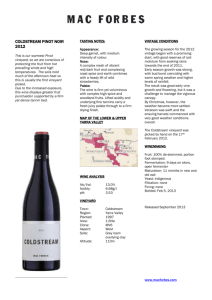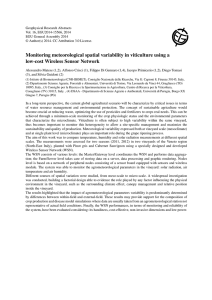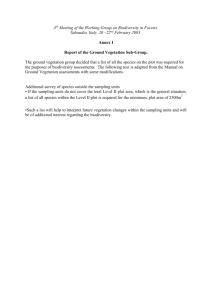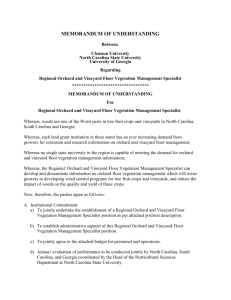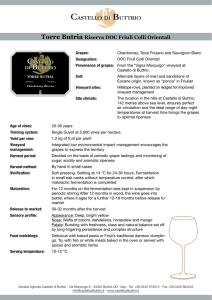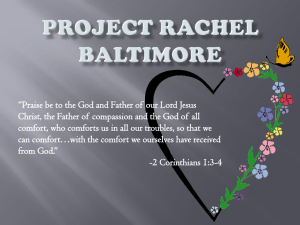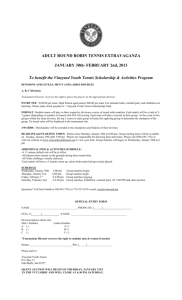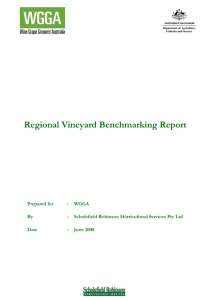MEDIA RELEASE - Trees For Life
advertisement
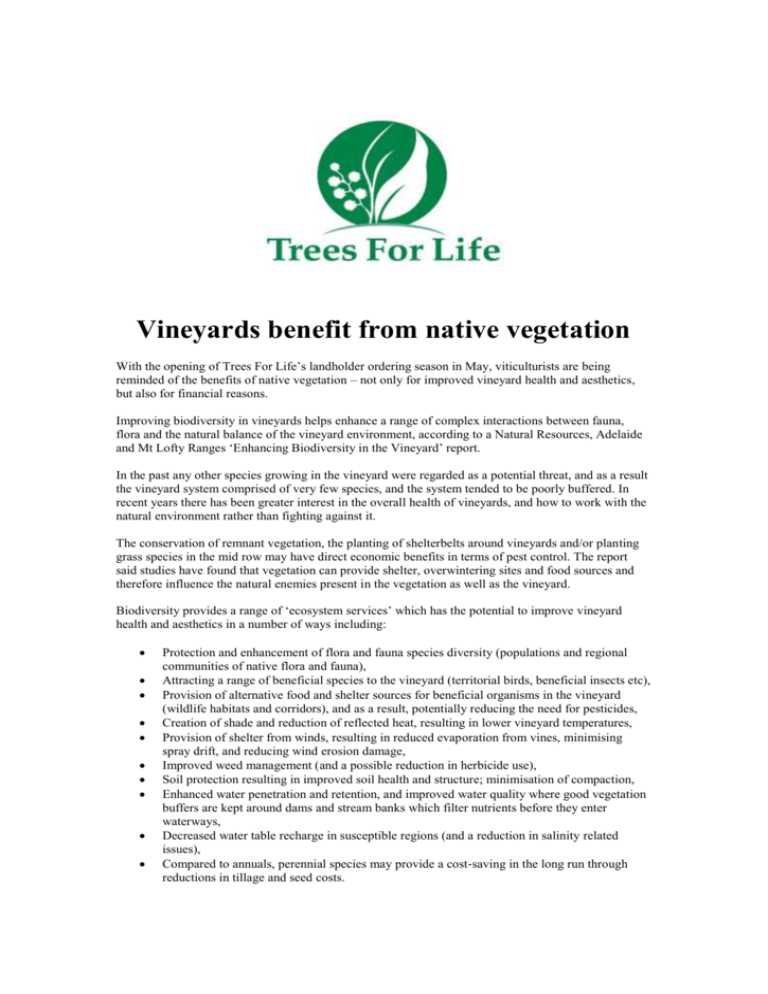
Vineyards benefit from native vegetation With the opening of Trees For Life’s landholder ordering season in May, viticulturists are being reminded of the benefits of native vegetation – not only for improved vineyard health and aesthetics, but also for financial reasons. Improving biodiversity in vineyards helps enhance a range of complex interactions between fauna, flora and the natural balance of the vineyard environment, according to a Natural Resources, Adelaide and Mt Lofty Ranges ‘Enhancing Biodiversity in the Vineyard’ report. In the past any other species growing in the vineyard were regarded as a potential threat, and as a result the vineyard system comprised of very few species, and the system tended to be poorly buffered. In recent years there has been greater interest in the overall health of vineyards, and how to work with the natural environment rather than fighting against it. The conservation of remnant vegetation, the planting of shelterbelts around vineyards and/or planting grass species in the mid row may have direct economic benefits in terms of pest control. The report said studies have found that vegetation can provide shelter, overwintering sites and food sources and therefore influence the natural enemies present in the vegetation as well as the vineyard. Biodiversity provides a range of ‘ecosystem services’ which has the potential to improve vineyard health and aesthetics in a number of ways including: Protection and enhancement of flora and fauna species diversity (populations and regional communities of native flora and fauna), Attracting a range of beneficial species to the vineyard (territorial birds, beneficial insects etc), Provision of alternative food and shelter sources for beneficial organisms in the vineyard (wildlife habitats and corridors), and as a result, potentially reducing the need for pesticides, Creation of shade and reduction of reflected heat, resulting in lower vineyard temperatures, Provision of shelter from winds, resulting in reduced evaporation from vines, minimising spray drift, and reducing wind erosion damage, Improved weed management (and a possible reduction in herbicide use), Soil protection resulting in improved soil health and structure; minimisation of compaction, Enhanced water penetration and retention, and improved water quality where good vegetation buffers are kept around dams and stream banks which filter nutrients before they enter waterways, Decreased water table recharge in susceptible regions (and a reduction in salinity related issues), Compared to annuals, perennial species may provide a cost‐saving in the long run through reductions in tillage and seed costs. Reduction in impact of greenhouse effect through absorption and locking up of CO2, Recovery of the ecosystem from unpredictable events, Potential improvement in grape quality, Improvement of property values where vegetation contributes to aesthetics, and A pleasant and informative cellar door experience (brochures and interpretive signage can be used to educate visitors to vineyard sites with enhanced biodiversity). Floral biodiversity can be achieved in and around the vineyard by incorporating a diversity of plants in the mid row area, adjoining shelterbelts, and remnant vegetation that may adjoin the vineyard. When undertaking revegetation for conservation purposes, viticulturists are advised to choose species that occur locally as it maintains the genetic integrity of those local populations. These species are well adapted to the environmental conditions of the site; and their pollinators, predators and dependent wildlife are also present. ie. native vegetation! Species selection – try native grasses One of the main strengths of native grasses over exotics is that they are already adapted to the Australian environment with low input requirements. Their ability to cope with variable and extreme climatic conditions and nutritionally poor soils potentially makes them a good choice as ground covers, both in the vineyard and its surrounds. Species selected for revegetation should: Provide a food source and/or shelter to a wide range of beneficial insects, Be easy to grow and manage, Require minimal inputs, Provide little or no competition to vines for water and nutrients, Flower for extended periods during the growing season, Not be suitable hosts for light brown apple moth, vine moth and other pest species, Not develop into an intrusive weed, and Preferably be self‐sowing annuals or perennial plants. According to the ‘Enhancing Biodiversity in the Vineyard’ report, it is for these reasons many viticulturists are turning to native grasses as the best option. Some of the main species such as Wallaby grass, Brush wiregrass and Spear grass are available through Trees For Life. Other species recommended for drier parts of the State include Curly Windmill grass and Bottle Washer Grass. Pest control Where there is a diverse mix of native vegetation surrounding the vineyard, this can provide protection for, and is more likely to attract, insect eating and predatory birds species, which protect their territory around the vineyard and actively discourage pest bird species from entering the vineyard. Examples of species that have a role as natural enemies in vineyards, and whose prevalence has been shown to increase where there is host vegetation available include: predatory mites (Typhlodoromus doreenae and Euseius victoriensis), spiders, staphylinids, predatory ladybirds, lacewings, predatory flies (Tachinidae, Cecidomyiidae, Syrphidae) and a wide range of parasitoids (including Trichogramma species). Nature’s water filters Native vegetation can increase water filtration, as they filter surface and subsurface water or drainage water from vineyards before it re‐enters natural waterways. Natural and artificially established plantings, especially of trees, are used as pumps to regulate groundwater levels where irrigation practices or vegetation clearance has resulted in raised water tables. Weed Management When poorly managed, weed control in vineyards has the potential to be very expensive, environmentally damaging, and detrimental to vine productivity and grape quality. Herbicide resistance can also develop when herbicides are used excessively and inappropriately. Planting native grass species to outcompete weeds (when they are mature) is an easy answer. Soil health and plant nutrition The loss of microbial diversity in the mid row is likely to affect the functional stability of the soil microbial community. Soils which have reduced biodiversity due to low plant species diversity, are also know to be less resistant and resilient to disturbances and stresses. Planting native grasses in the mid row helps restore this diversity. Economic benefits As well as potential improved plant health, improvement in grape quality and a reduction in costs associated with managing pests and diseases, it has been estimated that the cost benefit of establishing a shelter belt alone over a 20-year period is between $7000-9000. (based on 100m long shelterbelt 4m or 10m wide). Trees For Life is one of South Australia’s leading environmental organisations, helping local primary producers get the best out of their crops, stock and land through revegetation using native species. Species lists of native plants are available for 42 different zones throughout the State, ensuring indigenous species are specifically suited to the different regions. The lists offer trees, shrubs, grasses and groundcovers. To make it more affordable for primary producers who want to undertake large scale revegetation, native seedlings cost just 15 cents each – or $100 for 300 seedlings. To find out more, or to obtain a species list for your region, log onto the website at www.treesforlife.org.au or phone (08) 8406 0500. (The Enhancing Biodiversity in the Vineyard report was prepared by Mary Retallack for the AMLRNRM Board.)
